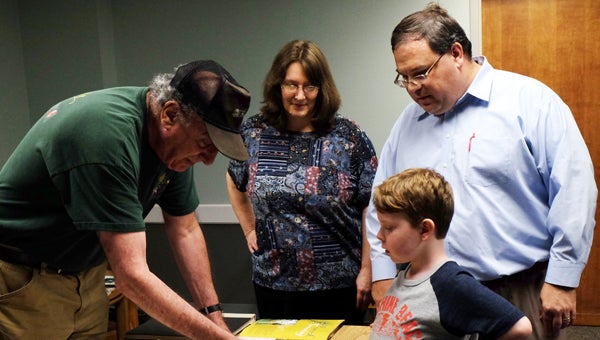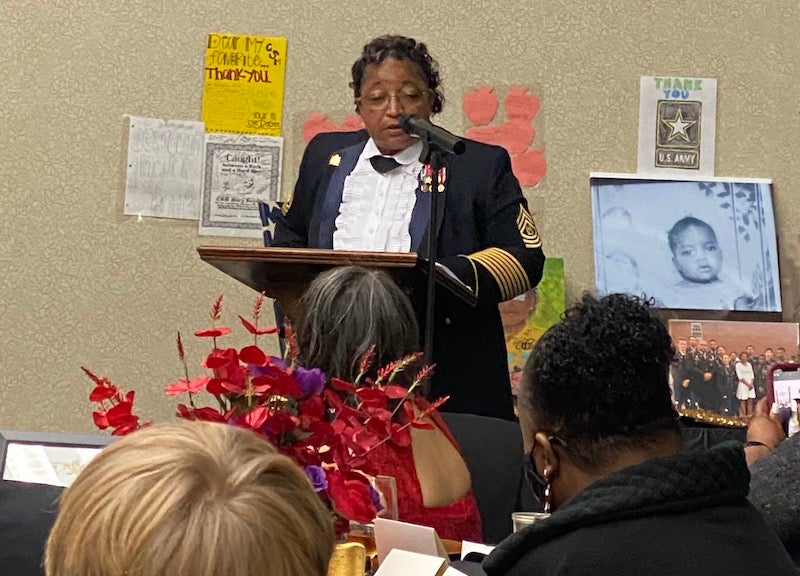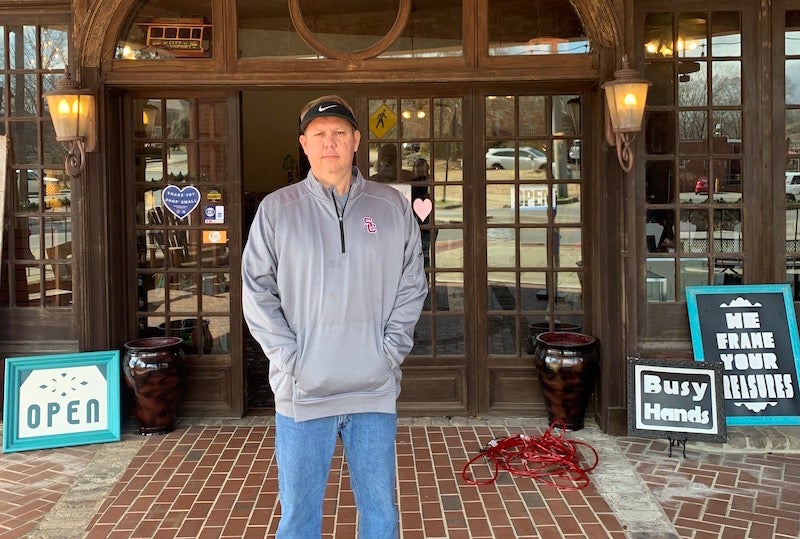Phillips offers look into antebellum Alabama
Published 4:33 pm Tuesday, September 29, 2015

Historian and videographer Jim Phillips shows Librarian Tracy Arnold, Jason Redd and son, Caleb, examples of Antebellum coins and money prior to his talk at the Jane B. Holmes Library. (Contributed)
By LAURA BROOKHART / Community Columnist
Historian and videographer Jim Phillips acquainted his Helena audience with an assortment of factual stories and fascinating oddities he has found along the way exploring Alabama’s Antebellum period.
The myth or reality of lost treasure will always intrigue those who enjoy digging around with a metal detector, which Phillips began a few years ago and is now a serious hobby.
Phillips emphasized the importance of getting permission from the property owner in every situation. He also brought along copies of “Lost Treasures” magazine, a publication he recommends for those interested in such.
He also brought an assortment of old paper money, coins and tokens as well as several old American bottles, which he appraises and personally collects.
He spoke of Chief Red Eagle William Weatherford, son of a Scottish father and a Creek Indian mother, and a leader in the Creek War of 1813-14. The second Creek War led to the Trail of Tears.
Weatherford’s life was spared by Andrew Jackson and he later rebuilt his life and fortune in Monroe County, Ala.
Phillips also recommended reading “Slave Narratives: A Folk History of Slavery in the United States from Interviews with Former Slaves,” assembled in the 1930s from a WPA Writer’s Project.
Speaking about the Antebellum Plantation homes, he said the cost to build at that time was $70,000-$170,000 and the planters grew beans and cotton, which began the era of Flatboats and the Steamboat for exporting goods along Alabama’s waterways.
Phillips especially enjoys collecting vintage bottles and inkwells and spoke of the thriving era of Patent Medicines with names such as Mexican Mustang Liniment.
Often high in alcoholic content, these accepted and popular remedies were frequently fortified with morphine, opium or cocaine and, as in Mrs. Winslow’s Soothing Serum, were advertised for teething or colicky infants and children. Parents often administered these remedies with tragic results.
One bottle, shaped like a glass cigar, Phillips showed, saying that the aspiring gentleman would fill it with brown liquor and place it in his jacket pocket to impress as if he could afford a real cigar.








